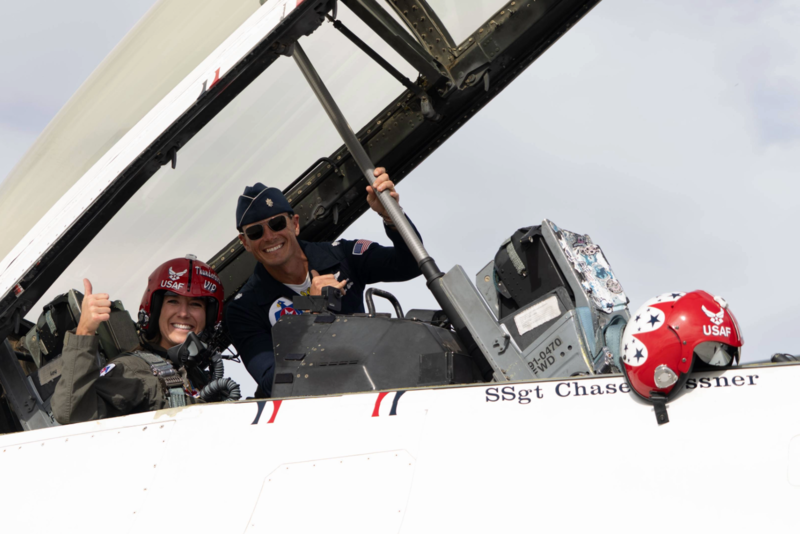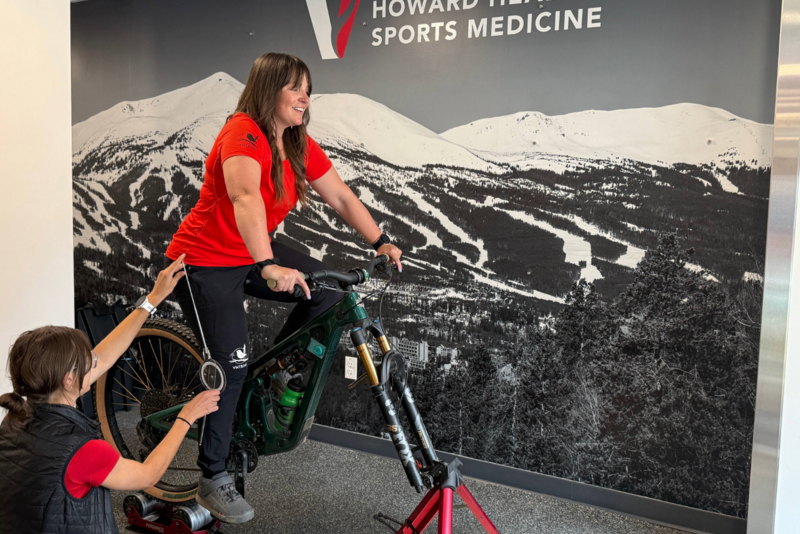News
Exercising Safely In The High Country
Will Brendza
June 24, 2019

The therapists at Howard Head Sports Medicine always stress safe exercise with their patients — whether they are visitors or locals. If you want to enjoy your adventures to their fullest, preventing injuries is paramount.
Easing In
In a world of backcountry variables, high-speed sports and powerful natural forces, how does one go about making exercise safe?
Warming up is the first step, says Mike Granzin, a McKenzie-certified therapist at Howard Head. Whether you’re biking, hiking, running, climbing, golfing, swimming or kayaking, getting your blood flowing and warming up your muscles beforehand is the first step in embarking on a safe workout or outdoor adventure.
“A lot of times you’re sitting in the car, driving for long periods of time to a trailhead. If you just pop out and go, you’re probably going to be a little stiff,” says Mike.
The same principle applies to getting on the ski hill — buckling your boots might stretch your legs and make you feel warm in all your ski clothes, but it’s not enough. Mike suggests back and hamstring stretches, specifically, and mild aerobics like jumping jacks can be helpful too.
Beyond the warm-up, though, there are two things in particular that tend to land people at Vail Health’s Emergency Department. “The first is jumping into exercise a little bit too quickly and too aggressively,” says Mike.
Start with a moderate approach and work your way up to the harder stuff. Not only does this serve to warm your body up to the activity you’re engaged in, but it also helps you discover your personal skill-level thresholds. If you throw yourself at the highest-intensity bike trail or hike you can find, your chances of self-injury go up exponentially — regardless of skill level.
The second most common, preventable factor for injuries is the misconception that you can run, bike or ski yourself into shape out of a cold start to the season.
Mike urges, "Ease yourself into exercise. Be proactive and do some strengthening exercises prior to actually trying to get out and have fun, so your body is at least semi-prepared.”
It’s like a seasonal warm-up, he says — a way to prime your muscles and your body at large for the fun still to come.
“If you don’t have a decent amount of strength in your glutes, hamstrings and quads, it can really throw off the mechanics of your knees or your back,” says Mike. Your body will try to compensate when it doesn’t have the strength and stability it needs, which can compromise your technique and quickly lead to joint damage.
So, in the weeks and months leading up to the season, make sure you get moving, grease up those joints and dust off your muscles a little bit. You’ll be glad you did.
Rest, Hydrate & Respect Your Surroundings
In our excitement to go faster, get stronger and feel fitter, the importance of rest days is often overlooked. Resting your muscles in between workouts is half of the process required to build strength, endurance and muscle. Maybe you can bike thirty miles uphill a day, every day, all summer long. However, if you don’t give your body a chance to regenerate itself, you’ll do it a disservice — not only won’t you fully experience the positive effects of exercise, you will also put your muscles at risk of over-exhaustion.
Along that same vein, sleep plays an essential role in safe exercise. Getting out and getting active when you’re dead tired is downright dangerous — certainly if you’re getting on a mountain bike or a rock wall, but also if you’re just going for a hike or to the gym. Your eye-hand coordination, dexterity and reaction time are all negatively affected by sleep deprivation — and all of those are essential to staying safe when exercising.
The natural environment and climate of the Rocky Mountains can pose challenges as well. Staying hydrated is a constant battle in the high country and dehydration is one of the most common causes of injury. The general rule of thumb is two liters (or a half gallon) of water per day, per person.
“Your body is only going to work well when you’re hydrated,” Mike states. “And the higher you go in altitude, or the lower you’re coming from, really becomes important.”
When heading into the wilderness, wildlife is something to take into consideration as well. Eagle County is home to deer, elk, moose, bobcat, mountain lions, black bears and many other creatures. They aren’t all dangerous, but it’s always safest to admire wildlife from a respectable distance. You might even consider carrying pepper spray in case of an encounter.
Finally, when exercising in the outdoors, please don’t forget to wear a high SPF sunscreen. Research shows the direct UV-B levels at elevation are approximately 60 percent higher than at sea level.
When you're finished working out, make sure you take some time to cool down. A gentle cool-down helps your breathing and heart rate return to normal, prevents blood from pooling up in your larger muscles and mitigates soreness the next day.
What it really comes down to in the end, though, is mindful exercise. Be aware of yourself and your capabilities, be conscious of your strength and hydration, be honest with yourself about your fitness level and be careful when you’re out there. The more mindful you are about your exercise, the safer it is going to be — and the more fun you’ll have.
Three Stretches To Help You Ease Into Your Workouts
Side Plank with Leg Lift
- While lying on your side, lift your body up on your elbow with one foot on top of the other.
- If you are able, slowly raise the top leg upward, hold for 5-10 seconds and return to the starting position.
- Hold the position for 5-10 seconds.
- Focus on maintaining a straight spine and controlling your breathing. As you are able, increase your hold times to increase the intensity.
Single Leg Reverse Dead Lift
- Standing on one leg with your knee slightly bent, keep your back straight and tighten your core, contracting your muscles.
- With both arms together, bend at the waist and lower your arms down towards the ground as you raise your opposite leg.
- Focus on keeping your balance while maintaining your core contraction throughout the movement.
- Return to the standing position. If you are able, do not let the moving leg touch the ground as you repeat the motion.
- Repeat 10 times on the same leg and then switch to the other side.
World’s Greatest Stretch
- Start in a runner’s stretch with one foot planted below your knee and your leg bent at a 90-degree angle. Stretch your other leg straight behind you.
- Place both hands on the ground and tighten your glute muscles. Hold for 3-5 seconds.
- If you are able, twist toward your bent leg, raising the same side arm up and gaze upward at your fingertips.
- Hold 3-5 seconds.
- Gently return to starting position and repeat on the other side.
ABOUT
Michael Granzin, Physical Therapist and SafeFit® Coordinator, Howard Head Sports Medicine
Michael is a McKenzie certified therapist - an advanced certification in the treatment of back and neck problems. With 11 locations in Eagle and Summit counties, Howard Head Sports Medicine patients benefit from innovative physical therapy techniques, state-of-the-art equipment and experienced physical therapists. As the official medical provider for the US Ski & Snowboard and USA Climbing teams, Howard Head Sports Medicine gets you back to doing what you love.
Learn more→
More News
-
More

Eagle physical therapist joins the U.S. Air Force’s 9G club
Eagle resident Devyn Kammert, a physical therapist with Howard Head Sports Medicine,
-
More

Optimize Your Ride: What Is a Medical Bike Fit and Why It Matters
Whether you're a weekend warrior, daily commuter or competitive cyclist, comfort and performance on your bike are...
-
More

Travel Tips to Combat Soreness & Fatigue
While some chase the snow, others are heading to the beach for warmer weather. Travel is a common passion of those...





